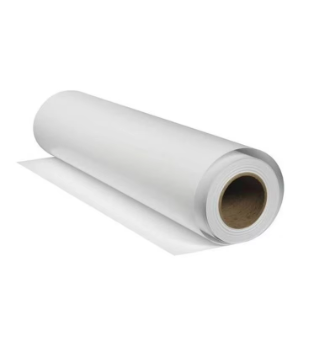خودرویی فیلمهای اولتراویولت : حفاظت و بهبود ظاهری
انواع اصلی فیلمهای UV خودرو
امروزه چند نوع فیلم UV خودرویی در بازار وجود دارد که هر کدام مزایای خاص خود را در دفع پرتوهای مضر UV، کاهش تابش و همچنین ظاهر خوب فراهم میکنند. گزینههای اصلی شامل فیلمهای دودی، شفاف و منعکسکننده میشوند. فیلمهای دودی به خودرو ظاهر تیرهتری میدهند که بسیاری از افراد دوست دارند، تابش را به خوبی کاهش میدهند و فضای داخلی را خصوصیتر میکنند و همچنان بیشتر پرتوهای UV مخرب را متوقف میکنند. فیلم منعکسکننده دارای ظاهر فلزی براقی است که کارکرد بسیار خوبی در دفع گرما و کاهش تابش دارد. فیلمهای شفاف متفاوت هستند چرا که هیچ تغییری در ظاهر داخل خودرو ایجاد نمیکنند و فقط روی جلوگیری از نفوذ پرتوهای UV تمرکز دارند. برخی تحقیقات نشان میدهند که این فیلمها میتوانند در حدود 99 درصد از نور UV مضر را بلوکه کنند که این امر به جلوگیری از ترک خوردن صندلیهای چرمی و پوسیدگی پارچهها در طول سالها کمک میکند. انتخاب نوع مناسب فیلم تفاوت زیادی در راحتی و زیبایی کلی خودرو ایجاد میکند. افراد علاقهمند باید به دقت بیشتری نوع مناسب فیلم UV را برای نیازهای خاص خود بررسی کنند.
مزایای افزایش طول عمر و ظاهر خودرو
مالکان خودروها شروع به نصب فیلم های UV خودرو کرده اند، زیرا این پوشش ها واقعاً سطوح داخلی و خارجی خودرو را در برابر کمرنگ شدن و ترک خوردن ناشی از تابش روزانه خورشید محافظت می کنند. صفحه نمایش (دستگاه تابلو) دیگر زرد نمی شود، صندلی های چرمی تازه باقی می مانند و از بروز شدن شکستگی جلوگیری می کنند و همچنین پوشش های کارخانه ای گران قیمت روی بدنه خودرو بسیار طولانی تر از حد انتظار دوام می آورند. در بلند مدت این افراد پول خود را صرفه جویی می کنند، چون دیگر نیازی نیست مدام چیزهایی مانند کاور صندلی ها یا تزیینات داشبورد را که از قرار گرفتن مداوم در معرض نور خورشید از بین می روند، تعویض کنند. به عنوان مثال جان از شهر فینیکس، فیلم UV را روی اسیووی خودش تابستان گذشته نصب کرد و حالا بچه هایش دیگر شکایت نمی کنند که داخل خودرو چقدر داغ می شود. تجربیات واقعی نشان می دهد که این فیلم ها در حفظ ظاهر خودرو و همچنین جلوگیری از نفوذ پرتوهای مضر UV بسیار موثرند. بیشتر افراد متوجه می شوند که پس از نصب، دیگر فراموش می کنند که این فیلم ها در خودروشان هستند تا اینکه کسی در مورد ظاهر خوب خودرویشان چند ماه بعد دیدگاه بدهد.
فیلمهای ضد اشعه فوق بنفش معماری: کارایی انرژی و ایمنی
انواع فیلم پنجرهای برای ساختمانها
امروزه انواع متعددی از فیلمهای UV معماری در بازار موجود است که هر کدام به دلایل متفاوتی مانند صرفهجویی در انرژی، زیبایی بصری یا افزایش ایمنی تولید شدهاند. بیایید آنها را به سه دسته اصلی تقسیم کنیم: فیلمهای کنترل خورشیدی، فیلمهای تزئینی و فیلمهای ایمنی که هر کدام ویژگیهای منحصربهفرد خود را دارند. فیلمهای کنترل خورشیدی عمدتاً با منعکس کردن بیشتر انرژی خورشید، از گرم شدن بیش از حد داخل ساختمانها جلوگیری میکنند. برخی مطالعات نشان میدهند که این فیلمها میتوانند در ماههای گرم تابستان حدود ۳۰ درصد در هزینههای سرمایش صرفهجویی کنند. فیلمهای تزئینی دو کارکرد دارند: ظاهر پنجره را زیباتر میکنند و در عین حال نور را از خود عبور میدهند بدون اینکه اجازه دهند دید کاملی از داخل فضا وجود داشته باشد. فکر کنید چطور کارمندان دفتری دوست دارند منظره ببینند اما نمیخواهند افراد غریبه از بیرون به داخل ساختمان نگاه کنند. در نهایت فیلم ایمنی وجود دارد که در واقع شیشه معمولی را به مادهای مقاومتر تبدیل میکند تا در صورت تلاش برای نفوذ، شیشه به راحتی شکسته نشود. تمام این فیلمها همچنین به کاهش هزینههای ماهانه انرژی کمک میکنند، به خصوص در ساختمانهای بزرگ که سیستمهای گرمایشی و سرمایشی باید به دلیل عایقبندی ضعیف، بیشتر کار کنند.
کاربردهای تجاری نسبت به مسکونی
کاربردهای فیلم UV در مقایسه با یکدیگر، کاملاً متفاوت به نظر میرسند، چیزی که باید برای هر کسی که قصد نصب این فیلمها را دارد در نظر گرفت. املاک تجاری معمولاً اولویت را به مزایای عملی مانند جلوگیری از نفوذ پرتوهای مضر UV و بهبود بهرهوری انرژی از طریق عایقبندی بهتر میدهند. مشتریان مسکونی اغلب بیشتر به نحوه تأثیر این فیلمها بر زیبایی فضای خود اهمیت میدهند، در حالی که همچنان از خسارات ناشی از تابش خورشید محافظت میشوند. اما در مورد کسبوکارها لایه دیگری نیز وجود دارد - مقررات نقش بزرگی در این زمینه دارند. ساختمانهای اداری باید الزامات گواهینامههای خاصی را برای دلایل ایمنی رعایت کنند. به عنوان مثال فیلمهای ایمنی، بسیاری از سازههای تجاری دارای رهنمودهای سفت و سختی در مورد این هستند که چه نوع موادی میتوانند روی پنجرهها استفاده شوند. بررسی مثالهای واقعی نشان میدهد که فیلمهای UV چقدر در صنایع مختلف قابلیت انطباق دارند. فروشگاههای خردهفروشی از آنها به شیوهای متفاوت استفاده میکنند نسبت به بیمارستانها، و هر دو رویکرد به خوبی در محیطهای خود عمل میکنند، هرچند که نیازهای عملیاتی کاملاً متفاوتی دارند.
فیلمهای UV صنعتی: استحکام در محیطهای سخت
فیلمهای سنگین برای محافظت از ماشینآلات
فیلمهای UV صنعتی برای مقاومت در شرایط سخت طراحی شدهاند. این فیلمها میتوانند در برابر گرمای شدید و مواد شیمیایی خورندهای که در مجاورت ماشینآلات بزرگ در کارگاهها وجود دارند، استقامت کنند. آنچه این فیلمها را متمایز میکند، مقاومت بالای آنها در برابر مواد شیمیایی و خراش است که از فرسایش و آسیب دیدن قطعات مهم تجهیزات جلوگیری میکند. به این ترتیب ماشینآلات عمر بیشتری دارند و کارخانهها بدون خاموشیهای غیرمنتظره به کار خود ادامه میدهند. همچنین، بیشتر تولیدکنندگان به استانداردهای شناخته شده صنعتی پایبند هستند، بنابراین شرکتها میدانند چه چیزی را خریداری میکنند وقتی این پوششهای محافظتی را میخرند. هرچند هیچ محصولی کاملاً بیعیب نیست، اما رعایت این استانداردها به کسبوکارها این اطمینان را میدهد که هزینهای را که انجام میدهند، در واقع سرمایهگذاری در حفاظت از داراییهای گرانبهاشان است.
مقاومت در برابر UV در محیطهای تولید
فیلمهای UV در محیطهای تولیدی برای حفاظت از تجهیزات و کارکنان در برابر تابش خطرناک UV بسیار مهم هستند. وقتی محیطهای کار این فیلمها را نصب میکنند، در واقع میزان تابش UV را کاهش میدهند و این امر باعث ایجاد محیطی بسیار ایمنتر میشود. متخصصان ایمنی صنعتی اغلب در مورد اینکه فیلمهای محافظتی UV چقدر میتوانند در عملیات کارخانهها تفاوت ایجاد کنند صحبت میکنند. آنها به مزایایی مانند افزایش بهرهوری و کاهش آسیبهای ناشی از کار اشاره میکنند. بررسی اعداد واقعی از کارخانههای مختلف نیز چیزی جالب را نشان میدهد. کارخانههایی که این فیلمهای حفاظتی UV را در عملیات خود به کار میگیرند، معمولاً شاهد کاهش حوادث ناشی از تابش UV هستند. این موضوع به معنای سلامت بیشتر کارکنان است که میتوانند مدت زمان بیشتری بدون وقفه در تولید، در محل کار خود باقی بمانند. برخی از مراکز حتی افزایش معناداری در روحیه کارکنان خود پس از اجرای کامل سیستم حفاظت UV در تمامی بخشهای کاری گزارش دادهاند.
فیلمهای ویژه اچوی: کاربردهای منحصر به فرد و نوآوریها
فیلمهای تزئینی برای طراحی داخلی
طراحان دکوراسیون داخلی در حال حاضر بیش از پیش به فیلمهای UV تزئینی روی آوردهاند تا فضاهای خود را زیباتر کنند و در عین حال از مزایای عملی این فیلمها نیز بهرهمند شوند. این فیلمها به تازگی در میان خانهها و اماکن کسب و کار بسیار محبوب شدهاند، چرا که ظاهری فوقالعاده زیبا در حین استفاده روی پنجرهها یا دیوارها دارند. آنچه آنها را متمایز میکند این است که تنها زیبا نیستند، بلکه واقعاً به بهبود حریم خصوصی کمک میکنند، بدون اینکه کل نور خورشید ورودی را مسدود کنند. ما در ماههای اخیر کاربردهای بسیار جالبی از این فیلمها دیدهایم، به خصوص در ساختمانهای اداری که این فیلمها اثراتی شگفتانگیز شبیه شیشههای رنگی یا الگوهای ماتی زیبا ایجاد میکنند که نحوه حرکت نور در فضا را تغییر میدهند. قسمت بهتر این است که این فیلمها در انواع مختلفی از طرح و رنگ موجود هستند، به طوری که افراد میتوانند دقیقاً آنها را با هر سبک دکوراسیونی که برای فضای خود انتخاب کردهاند هماهنگ کنند. برای کسی که به دنبال ترکیبی از سبک و عملکرد در انتخاب دکوراسیون خود است، این فیلمهای UV چیزی ویژه و متفاوت نسبت به تیمارهای معمول پنجرهها ارائه میدهند که هیچ یک از آنها نمیتوانند به رقابت با این فیلمها بپردازند.
فرهنگهای نوظهور در راهحلهای فیلم UV
فناوری فیلم UV این روزها بسیار سریع در حال تغییر است و چیزهای کاملاً جدید و جالبی را به ارمغان میآورد که واقعاً بهتر از گذشته کار میکنند. ما شاهد ظهور چیزهایی مثل فیلمهای خود تمیزشونده و پوششهای ضد میعان هستیم که در زمینههای مختلفی که قبلاً هزینههای نگهداری مشکلساز بودند، تأثیر گذاشتهاند. نکته جالب این است که این بهبودها چگونه درهایی به سوی کاربردهای کاملاً جدید در مکانهای غیرمنتظره گشودهاند، از جمله شیشه جلوی اتومبیلها تا نمای ساختمانها. وقتی تولیدکنندگان شروع به استفاده از نانوتکنولوژی در این زمینه میکنند، نتایج به خودی خود گویا هستند - محصولاتی با دوامتر که توانایی بیشتری در بلوکه کردن پرتوهای UV دارند. بیشتر کارشناسان با این باور هستند که در آینده، تمرکز بیشتری بر سوی استفاده از مواد سبزتر و ویژگیهای هوشمندانهتر که به شرایط محیطی واکنش نشان میدهند، خواهد بود. بازار هم این محصولات را میخواهد، چون مردم امروزه بیش از پیش به پایداری اهمیت میدهند. در حالی که شرکتها با استفاده از این دستاوردها آزمایش میکنند، شاهد هستیم که فیلمهای UV به طور فزایندهای در کاربردهای غیرمنتظرهای ظاهر میشوند که مشکلاتی را که چند سال پیش غیرممکن به نظر میرسیدند، حل میکنند.
سوالات متداول
نقاط قوت اصلی فیلمهای اولتراویولت خودرو چیست؟
فیلمهای ضد اشعه فوق بنفش مخصوص خودروها حفاظت از برابر اشعه فوق بنفش، کاهش تابندگی و افزایش حریم خصوصی را فراهم میکنند همزمان با نگهداری از زیبایی ظاهری وسیله نقلیه. آنها کمک میکنند عمر داخلی خودرو را افزایش دهند و نیاز به جایگزینی مکرر قطعات تحت تأثیر آسیاب خورشیدی را کاهش دهند.
چگونه فیلمهای ضد اشعه فوق بنفش معماری به کارایی انرژی کمک میکنند؟
فیلمهای ضد اشعه فوق بنفش معماری، به ویژه فیلمهای کنترل خورشیدی، افزایش گرمای وارد شده را کاهش میدهند و با بازتاب بخشی از انرژی خورشیدی، هزینههای انرژی را کاهش میدهند که منجر به صرفهجویی در عملکرد سیستمهای گرمایش و سازگاری میشود.
چرا فیلمهای ضد اشعه فوق بنفش صنعتی در محیطهای تولیدی حیاتی هستند؟
فیلمهای ضد اشعه فوق بنفش صنعتی ماشینآلات و افراد را از تابش فوق بنفش مضر محافظت میکنند، که این موضوع طولانیتر شدن عمر ماشینآلات و بهبود امنیت را فراهم میکند و در نتیجه بهرهوری را افزایش میدهد.
نقش آفرینی فیلمهای UV تزئینی در طراحی داخلی چیست؟
فیلمهای UV تزئینی بهبود زیبایی را با افزودن عناصر هنری به فضای طراحی و همچنین حل نگرانیهای مربوط به خصوصیت انجام میدهند. آنها میتوانند الگوهای شیشه رنگی یا الگوهای کدر شده را شبیهسازی کنند و جو را غنیتر کنند.

